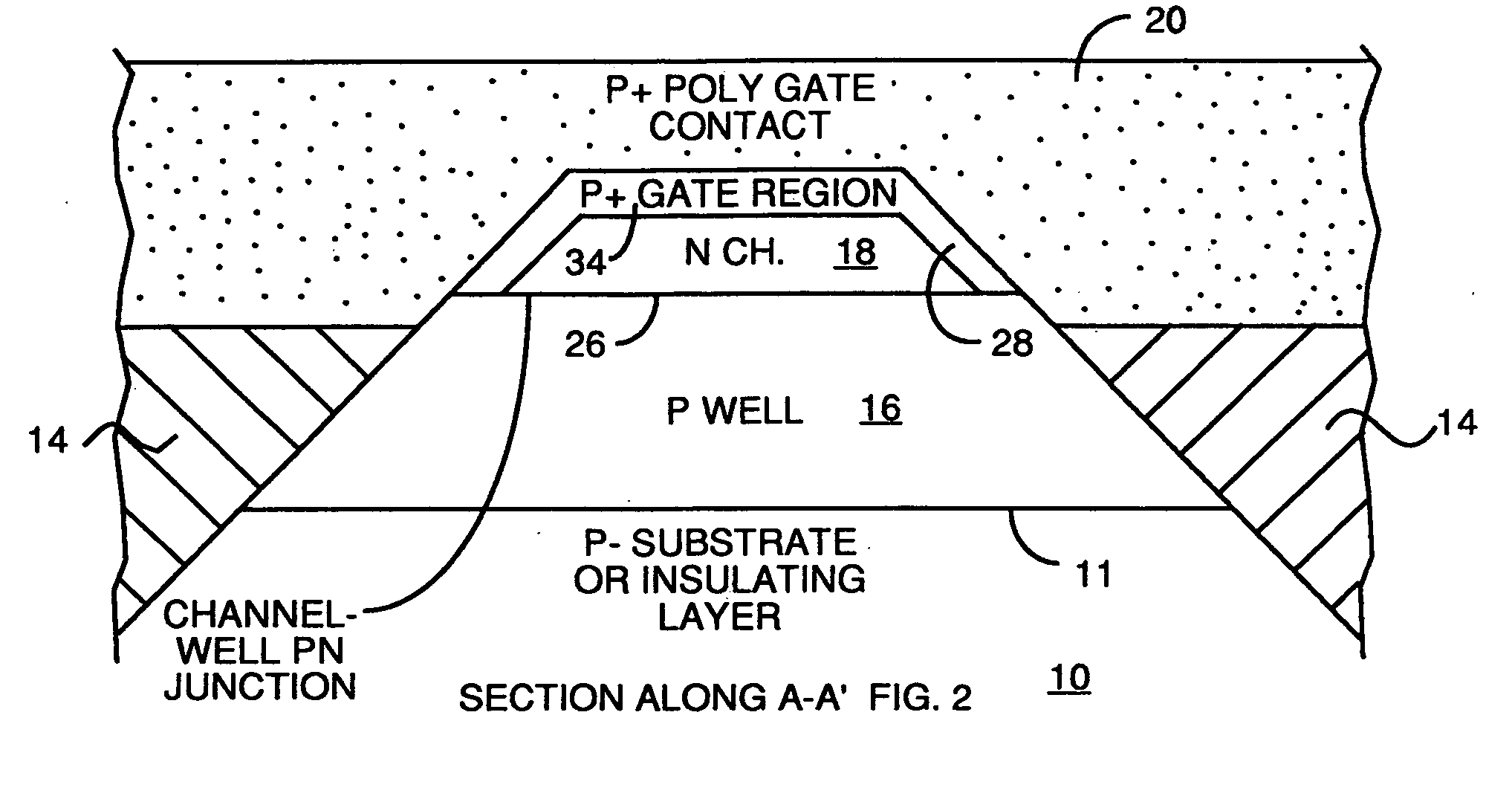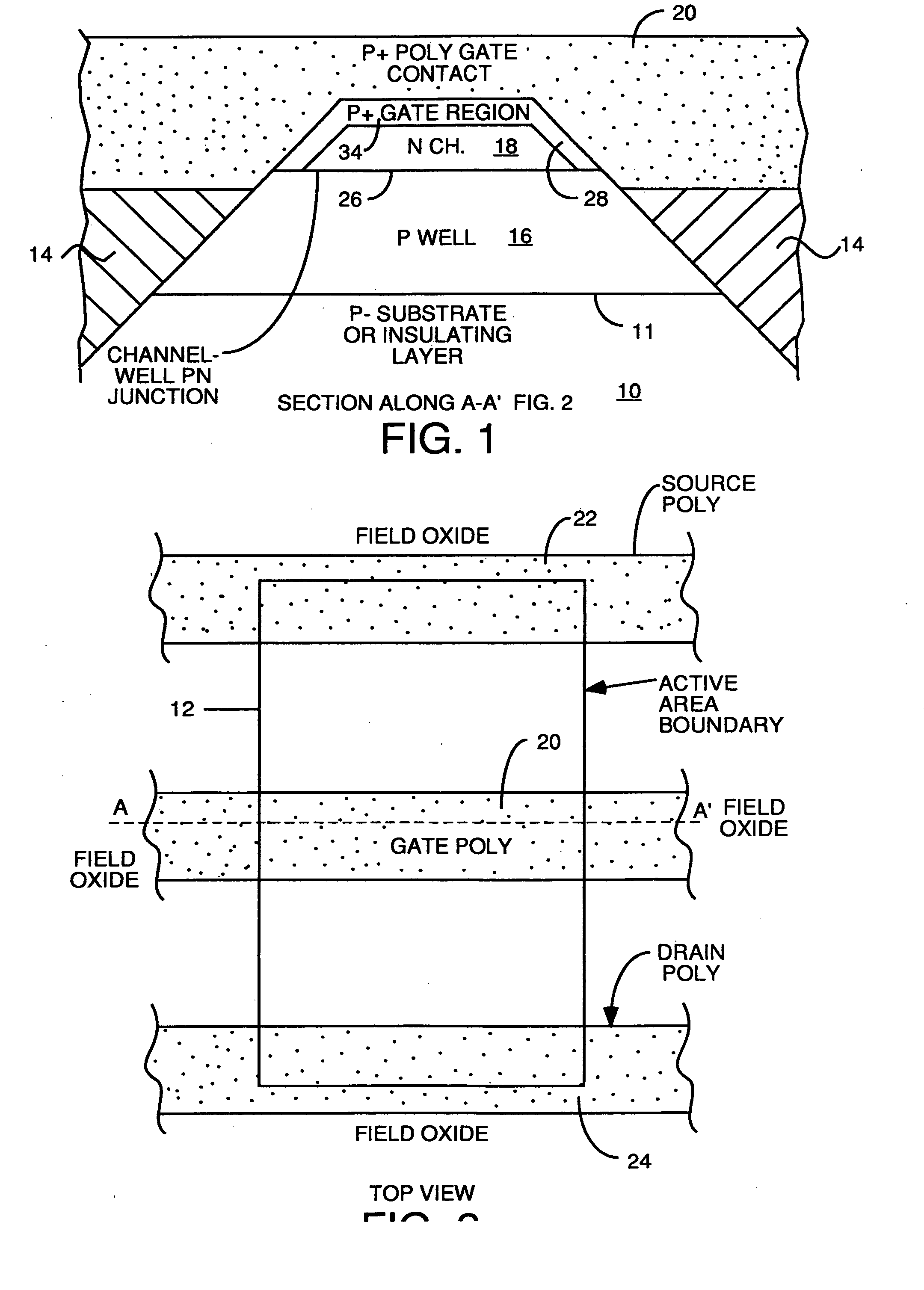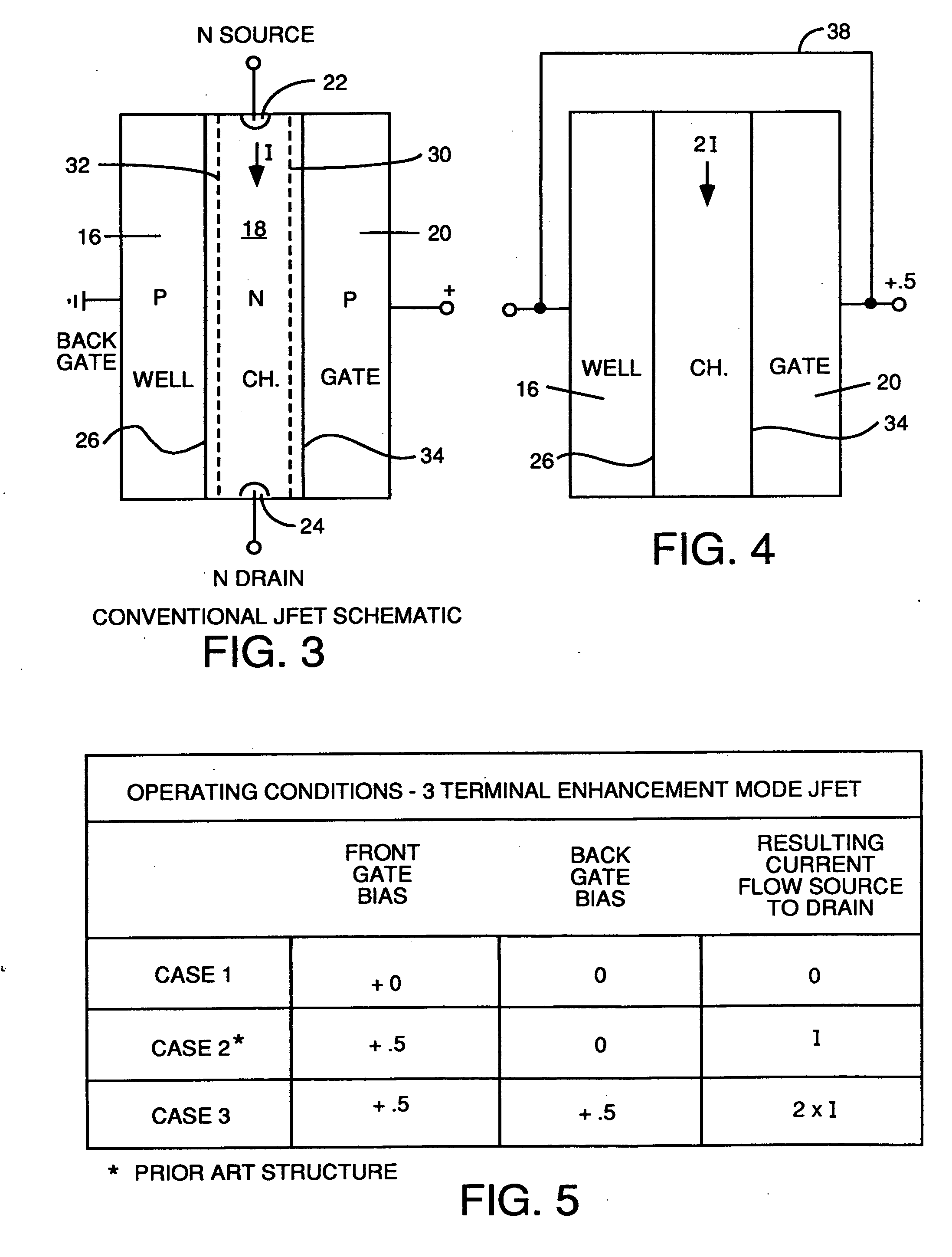JFET with built in back gate in either SOI or bulk silicon
a back gate and silicon technology, applied in the direction of semiconductor devices, electrical apparatus, transistors, etc., can solve the problems of reducing the overall total number of devices that can be formed on any wafer, consuming chip area, etc., and achieving the elimination of parasitic capacitance of the back gate contact, eliminating the parasitic capacitance of the junction, and consuming the effect of area
- Summary
- Abstract
- Description
- Claims
- Application Information
AI Technical Summary
Benefits of technology
Problems solved by technology
Method used
Image
Examples
case 2
[0033]Case 2 represents the prior art case shown in FIG. 3 where +0.5 volts is applied to the front gate and the back gate is grounded. In this case, source-to-drain current flow is i.
case 3
[0034]Case 3 is the case according to the teachings of the invention where when +0.5 volts is applied to the front gate, the same bias of +0.5 is automatically applied to the back gate. This case is represented by FIG. 4. This case results in a source-to-drain current flow of 2 times i. The reason the current flow is 2 i in Case 3 is because both the front gate and the back gate are forward biased. This causes the depletion region to pull back or disappear around both of junctions 26 and 34. This effectively doubles the volume in the channel through which current can flow and reduces the resistance proportionately. This increases the current flow to twice the level of the prior art when the back gate is grounded. Of course a current flow of 2 i can be achieved in the prior art structure by using the surface contact of the back gate to forward bias the back gate junction.
The Preferred Epi on Insulator Embodiment Structure and Process
[0035]Appendix A is a table giving the process step...
PUM
 Login to View More
Login to View More Abstract
Description
Claims
Application Information
 Login to View More
Login to View More - R&D
- Intellectual Property
- Life Sciences
- Materials
- Tech Scout
- Unparalleled Data Quality
- Higher Quality Content
- 60% Fewer Hallucinations
Browse by: Latest US Patents, China's latest patents, Technical Efficacy Thesaurus, Application Domain, Technology Topic, Popular Technical Reports.
© 2025 PatSnap. All rights reserved.Legal|Privacy policy|Modern Slavery Act Transparency Statement|Sitemap|About US| Contact US: help@patsnap.com



